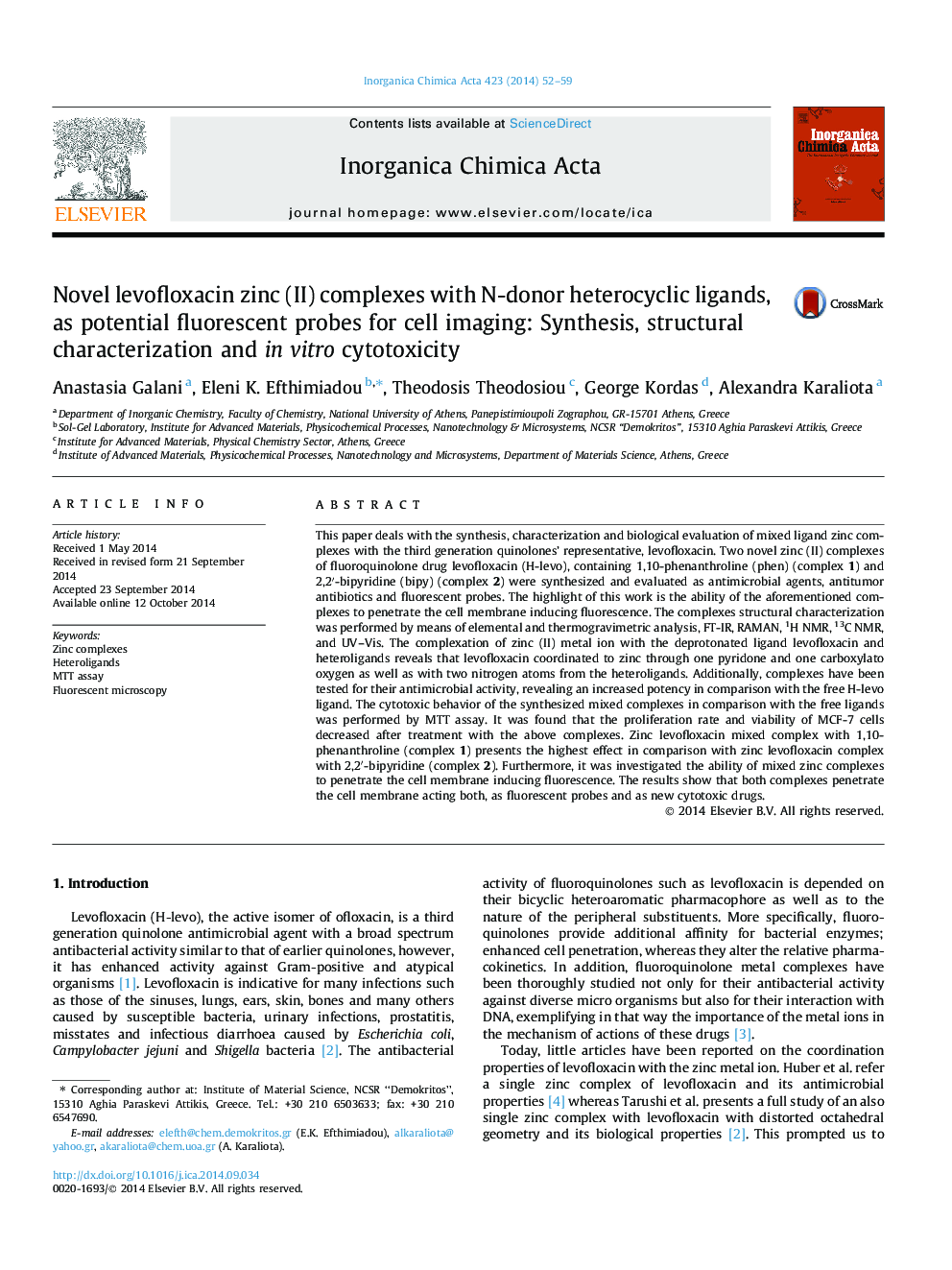| Article ID | Journal | Published Year | Pages | File Type |
|---|---|---|---|---|
| 1309342 | Inorganica Chimica Acta | 2014 | 8 Pages |
•Synthesis of levofloxacin complexes with zinc and heterocyclic ligands.•Characterization of complexes.•Cytotoxicity evaluation by MTT.•Study of internalization mechanism by fluorescent microscopy.
This paper deals with the synthesis, characterization and biological evaluation of mixed ligand zinc complexes with the third generation quinolones’ representative, levofloxacin. Two novel zinc (II) complexes of fluoroquinolone drug levofloxacin (H-levo), containing 1,10-phenanthroline (phen) (complex 1) and 2,2′-bipyridine (bipy) (complex 2) were synthesized and evaluated as antimicrobial agents, antitumor antibiotics and fluorescent probes. The highlight of this work is the ability of the aforementioned complexes to penetrate the cell membrane inducing fluorescence. The complexes structural characterization was performed by means of elemental and thermogravimetric analysis, FT-IR, RAMAN, 1H NMR, 13C NMR, and UV–Vis. The complexation of zinc (II) metal ion with the deprotonated ligand levofloxacin and heteroligands reveals that levofloxacin coordinated to zinc through one pyridone and one carboxylato oxygen as well as with two nitrogen atoms from the heteroligands. Additionally, complexes have been tested for their antimicrobial activity, revealing an increased potency in comparison with the free H-levo ligand. The cytotoxic behavior of the synthesized mixed complexes in comparison with the free ligands was performed by MTT assay. It was found that the proliferation rate and viability of MCF-7 cells decreased after treatment with the above complexes. Zinc levofloxacin mixed complex with 1,10-phenanthroline (complex 1) presents the highest effect in comparison with zinc levofloxacin complex with 2,2′-bipyridine (complex 2). Furthermore, it was investigated the ability of mixed zinc complexes to penetrate the cell membrane inducing fluorescence. The results show that both complexes penetrate the cell membrane acting both, as fluorescent probes and as new cytotoxic drugs.
Graphical abstractFluorescence images of MCF-7 cells after 2 h treatment with complex 1 (A) and 2 (B).Figure optionsDownload full-size imageDownload as PowerPoint slide
